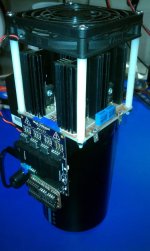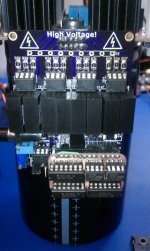rhitee05
10 kW
A bootstrap high-side supply is basically a charge pump, except it uses the FETs as the switching element rather than a separate switching circuit. It's simple, very effective, and widely used. I have no idea why Arlo hates it so much... All you need is a diode and one or a couple of capacitors. There are certain edge cases where bootstrapping fails, but if you think about it carefully that scenario is almost impossible to encounter in a BLDC application. There are many, many app notes and other documents which describe how to do bootstrapping correctly and how to choose the components.




